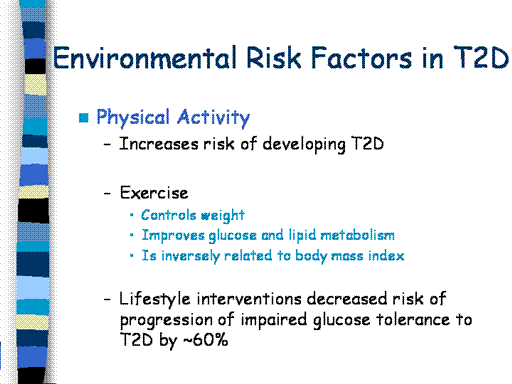| front |1 |2 |3 |4 |5 |6 |7 |8 |9 |10 |11 |12 |13 |14 |15 |16 |17 |18 |19 |20 |21 |22 |23 |24 |25 |26 |27 |28 |29 |30 |31 |32 |33 |34 |35 |36 |37 |38 |39 |40 |41 |42 |43 |44 |45 |46 |47 |48 |49 |50 |51 |52 |53 |54 |review |
 |
The other
major T2D risk factor is physical inactivity.
In addition to controlling weight, exercise improves glucose and
lipid metabolism, which decreases T2D risk.
Physical activity, such as daily walking or cycling for more than
30 minutes, has been shown to significantly reduce the risk of T2D.
Physical activity has also been inversely related to body mass
index.
Recently,
intervention studies in China, Finland, and the US have shown that
lifestyle interventions targeting diet and exercise decreased the risk
of progression of impaired glucose tolerance to T2D by approximately
60%. In contrast, prophylactic
oral hypoglycemic medication only reduced the risk of progression by
about 30%.
|